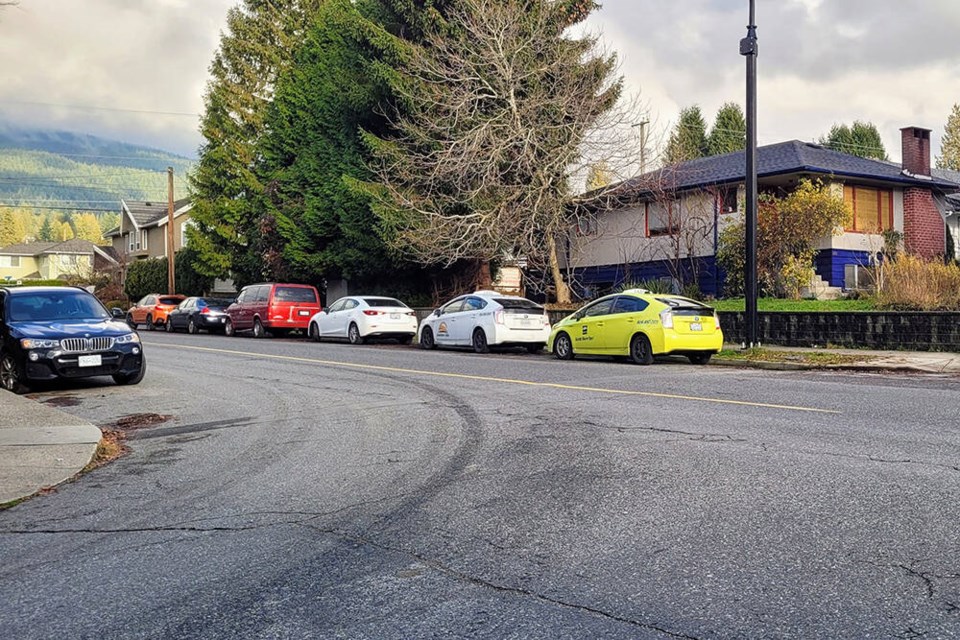Is it just me, or are sightlines at intersections worse now than in the past?
We’ve all been at that intersection where you need to creep out to nearly the middle of the road to see whether there are any cars coming. It doesn’t matter whether you are on foot, on a bike, or driving a car. Certain intersections are harder to cross because you can’t see what’s coming.
I hate to admit that there are some instances while driving when I wait at an intersection and vehicles are parked on both sides so close to the stop bar that there’s no way to see around them. I search vainly for clues, like a light reflecting on the parked cars opposite, and then finally decide to press on, hoping that no one comes along to T-bone me. And then … I slam on the brakes when a fast-moving vehicle lurches by, honking. Ugh. Sorry about that. Note to self: “next time, just drive around the block.”
What has led to this situation? One of the culprits is on-street parking too close to intersections. It was fine when we all drove a Honda Civic or Mazda3, but now, with the increased height and bulk of delivery vans, SUVs and personal trucks, you might as well try looking through a three-meter brick wall. Naturally, large vehicles prize corner parking spots because they’re easier to get into than trying to parallel park a land yacht.
There are rules meant to help, or at least sort of. In the City of North Vancouver and in Vancouver, the parking setback from an intersection is six meters. For a laneway or driveway, the setback is three meters. In the District of North Vancouver, the distance is 11 meters from an intersection. In San Fransisco, the setback is 30 feet, or nine meters.
The Federal Highway Administration in the United States recommends parking be restricted 15 meters from crossing points on roads with speeds up to 55 kilometres per hour. Why are these numbers all different? Speed comes into the equation. The faster the speed limit, the longer the setback. Also, if corners are skewed by hills and sightlines are difficult due to terrain, as is often the case on the North Shore, larger setbacks are prudent.
Density may play a role as well. Until we figure out decent public transit, as housing density mushrooms, so does the demand for on-street parking. The places with the highest density have the biggest parking problems and the smallest parking setbacks. Weird, eh? People cram their cars into the tightest of spaces. With few signs or curb markings to indicate the limits, we all stuff into spots we shouldn’t.
People walking and rolling are most at risk when parking setbacks aren’t lengthy enough. As a driver who can’t see through a solid object, there’s no other way than to inch out into the intersection to take a look. Most drivers travel slowly while trying to see around impenetrable impediments. However, I’ve had a few narrow misses when right-turning vehicles, not looking for a bike, roar around the corner right in front of me. Similarly, as a pedestrian, I’ve had trouble sighting through an intersection without having to walk at least a third of the way across, putting me into the lane of traffic before I can see it. Not ideal.
Could we just agree that we need to make setbacks bigger at intersections? The only disadvantage to removing a couple of parking spots is that it eliminates parking space. Some countries and cities have simply eliminated street parking altogether. The entire country of Japan allows very little street parking. Google “Kyoto street” and ask for images. Not one parked car. Paris has removed more than 70 per cent of its street parking. In Emeryville, Calif., the city eliminated street parking, turning it into an active space for people. It takes "vision" to make that kind of wholesale change, ha ha.
Bring on the comments.
Heather Drugge is a sustainable transportation advocate who has used her bike for transportation for more than 20 years. She’s got an e-bike now, and maybe a jetpack next. [email protected].



